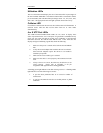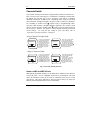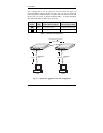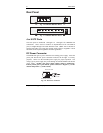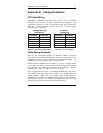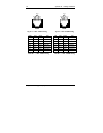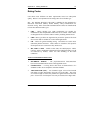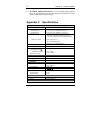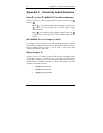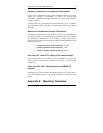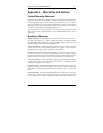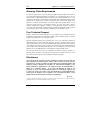
Appendix B Cabling Guidelines 13
KNExTX/WG User’s Guide - Rev. A00 Kingston Technology Company
Rating Codes
UTP cables meet different UL-NEC requirements based on cable-jacket
quality. Below is an explanation of the rating codes for each cable type.
UL – The National Electrical Code (NEC), published by the National Fire
Protection Association (NFPA), details advisory safety considerations for
electrical wiring. NEC Article 800 Communications Cables are manufactured
to meet these different cable types.
1. CMP – Cables meeting type CMP requirements are suitable for
installation in ducts and plenums without the use of conduit. These cables
are designed for fire resistance and low-smoke producing characteristics.
2. CMR – Riser type cables are engineered to prevent the spread of fire from
floor to floor and are suitable for vertical shaft applications.
3. CM – Cables for general building wiring. CM cables are used in areas
other than plenums and risers. These cables are resistant to the spread of
fire and pass the UL 1581Vertical Tray Flame Test.
4. MP, MPR & MPP – Within Article 800, the Multi-purpose Cables
Category, allows conditional substitutions between different cable types &
are restricted by number, AWG size and stranding of the cable
conductors.
Terms You Should Be Familiar With
1. BACKBONE WIRING – The physical/electrical interconnections
between telecommunications closets and equipment rooms.
2. COMPLIANCE – A wiring device that meets all characteristics of a
standard is said to be in compliance with that standard.
3. TWISTED PAIR (UTP) – Two insulated copper wires twisted around
each other to reduce interference from one wire to the other. The twists
are varied in length to reduce the potential for signal interference between
pairs. Several sets of twisted pair wires may be enclosed in a single cable.



